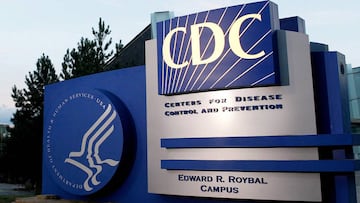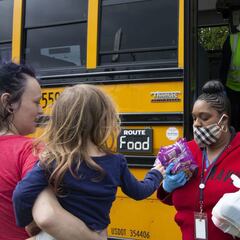What is norovirus, and why is it affecting the US so much? Symptoms and treatment
Norovirus is spreading across the United States. What are the symptoms and what can you do to avoid catching it?

Authorities in the United States are warning the public about the growing threat of Norovirus after an uptick in the test positivity rate for the virus was recorded. This virus is commonly referred to as the stomach bug or stomach flu, but it is not related to the influenza virus, which is commonly known as the flu.
#Norovirus levels are currently the highest we have seen at this time of year in over a decade. Most reported cases are in the over 65s and we’re also seeing a rise in reported outbreaks, particularly in care home settings.
— UK Health Security Agency (@UKHSA) February 9, 2023
Read more: https://t.co/Vou2aFmPXn
Recent data from the CDC, which tracks testing of norovirus, found that the positivity rate hit 12.34 percent last week, which indicates that the virus is spreading rapidly. However, during this time of year, an uptick in cases is normal, and the figure published by the CDC is actually lower than that captured during the same period in February 2023. So rather than the country experiencing a huge surge in cases, cold and flu season are in full swing and precautions should be taken to protect your health.
An outbreak of norovirus can happen when an individual consumes food or water that has been contaminated with the virus. Noroviruses can easily spread from one infected person to another.
What are the symptoms of Norovirus and how long before they appear?
Symptoms of norovirus infection generally appear within 12 to 48 hours after exposure to Norovirus. Most people will experience diarrhea, nausea, stomach pain and vomiting. You may also have body ache, fever and headache. The majority who contract norovirus illness will get better within one to three days.
However, young children, the elderly and those with compromised immune systems or other illnesses could experience severe illness. This could include having diarrhea and vomiting several times a day which could lead to dehydration.
Symptoms of dehydration according to the CDC include a decrease in urination, dry mouth and throat, and feeling dizzy when standing up. For young children, they may cry with few or no tears and be unusually sleepy or fussy.
Related stories
The CDC advises that if you think you or someone you are caring for is severely dehydrated, to call your healthcare provider.
How long can Norovirus live on surfaces?
However, surfaces are another way the virus is transmitted. The virus can survive on surfaces for two weeks, meaning that disinfecting those touched or exposed to droplets is critical to slowing the spread. To avoid infections, surfaces should be cleaned regularly with “a bleach-based household cleaner or a combination of bleach and hot water.” Public health officials recommend cleaning toilets, faucets, telephones, door handles, and other surfaces after they have been used by a person who has become infected.


Complete your personal details to comment